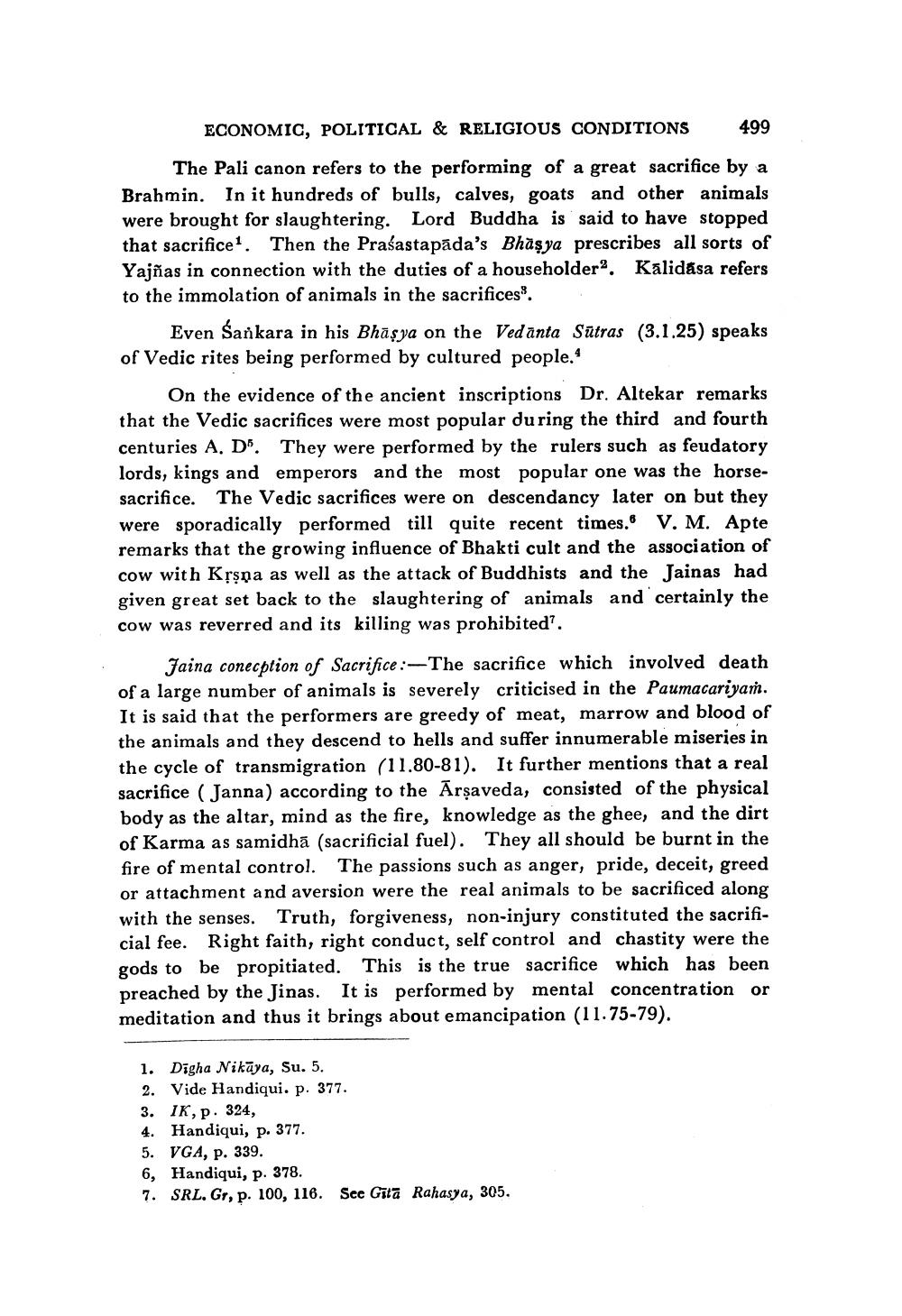________________
ECONOMIC, POLITICAL & RELIGIOUS CONDITIONS
499
The Pali canon refers to the performing of a great sacrifice by a Brahmin. In it hundreds of bulls, calves, goats and other animals were brought for slaughtering. Lord Buddha is said to have stopped that sacrifice1. Then the Prasastapāda's Bhasya prescribes all sorts of Yajñas in connection with the duties of a householder2. Kalidasa refers to the immolation of animals in the sacrifices".
Even Sankara in his Bhasya on the Vedanta Sutras (3.1.25) speaks of Vedic rites being performed by cultured people.1
On the evidence of the ancient inscriptions Dr. Altekar remarks that the Vedic sacrifices were most popular during the third and fourth centuries A. D. They were performed by the rulers such as feudatory lords, kings and emperors and the most popular one was the horsesacrifice. The Vedic sacrifices were on descendancy later on but they were sporadically performed till quite recent times. V. M. Apte remarks that the growing influence of Bhakti cult and the association of cow with Kṛṣṇa as well as the attack of Buddhists and the Jainas had given great set back to the slaughtering of animals and certainly the cow was reverred and its killing was prohibited'.
Jaina conecption of Sacrifice:-The sacrifice which involved death of a large number of animals is severely criticised in the Paumacariyam. It is said that the performers are greedy of meat, marrow and blood of the animals and they descend to hells and suffer innumerable miseries in the cycle of transmigration (11.80-81). It further mentions that a real sacrifice (Janna) according to the Arṣaveda, consisted of the physical body as the altar, mind as the fire, knowledge as the ghee, and the dirt of Karma as samidha (sacrificial fuel). They all should be burnt in the fire of mental control. The passions such as anger, pride, deceit, greed or attachment and aversion were the real animals to be sacrificed along with the senses. Truth, forgiveness, non-injury constituted the sacrificial fee. Right faith, right conduct, self control and chastity were the gods to be propitiated. This is the true sacrifice which has been preached by the Jinas. It is performed by mental concentration or meditation and thus it brings about emancipation (11.75-79).
1. Digha Nikaya, Su. 5.
2. Vide Handiqui. p. 377.
3. IK, p. 324,
4. Handiqui, p. 377.
5. VGA, p. 339.
6, Handiqui, p. 378.
7. SRL. Gr, p. 100, 116. See Gita Rahasya, 305.




